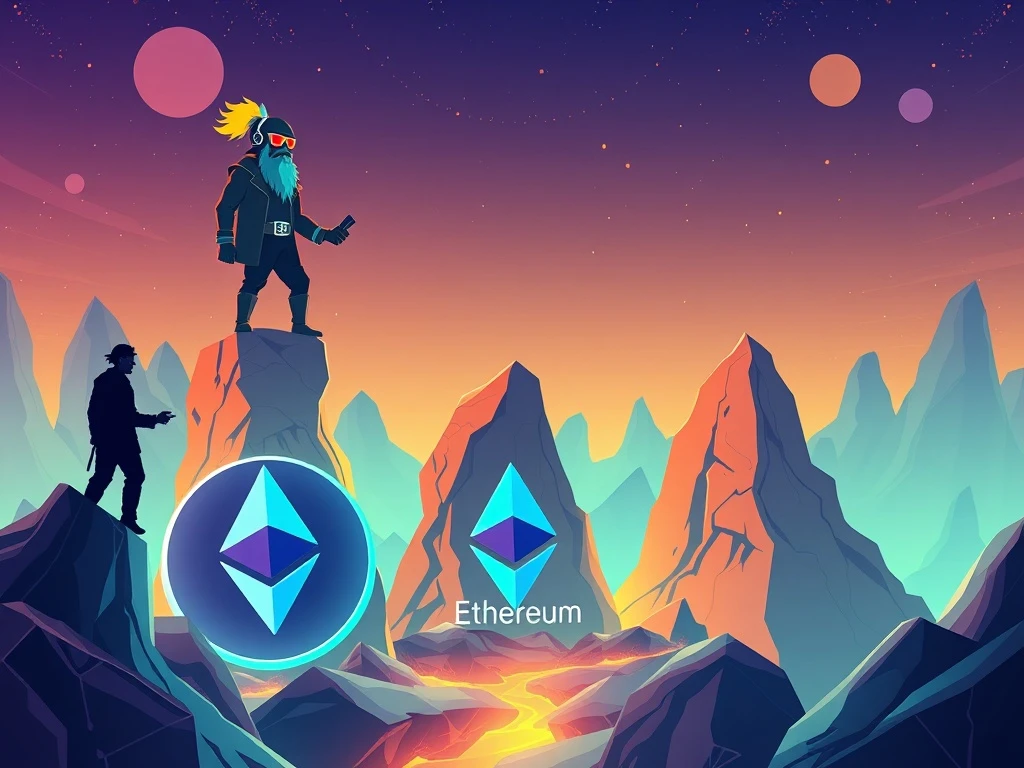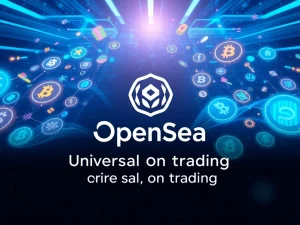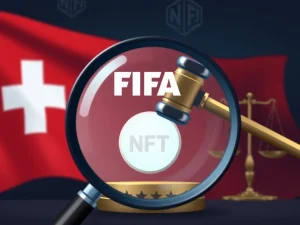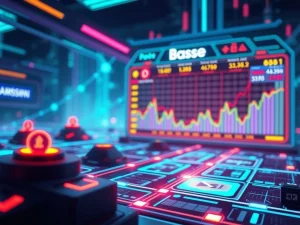CryptoPunks: Arthur Hayes Unveils Bold Prediction of Ethereum Outperformance Amidst 460% Surge

A seismic shift might be underway in the crypto world, as Arthur Hayes, the influential co-founder of BitMEX, drops a bold prediction: CryptoPunks are set to eclipse Ethereum Price in the current bull cycle. This isn’t just a fleeting thought; it’s backed by a staggering 460% weekly sales surge for the iconic digital collectibles. Could this signal a fundamental change in how we perceive value in the blockchain space?
The Bold Arthur Hayes Prediction: Status Over Utility?
Arthur Hayes, known for his insightful yet sometimes controversial market commentary, recently asserted that the CryptoPunks NFT collection is poised to outperform Ethereum (ETH) in U.S. dollar terms. This isn’t about technical utility; it’s about social signaling. Hayes argues that as Ethereum holders accumulate profits, they are increasingly redirecting capital into NFTs like CryptoPunks to signal wealth and influence in digital spaces. He draws a compelling parallel between CryptoPunks and luxury goods such as designer watches or rare art, emphasizing their cultural capital over their technical function.
This Arthur Hayes prediction challenges traditional investment theses that prioritize a blockchain’s technological advancements. Instead, Hayes suggests a shift in investor behavior, where cultural prestige and social signaling become paramount.
CryptoPunks’ Unprecedented Surge: A Sign of the Times?
The surge in NFT demand, particularly for blue-chip projects like CryptoPunks, supports Hayes’ thesis. Recent market data shows significant activity for this collection, one of the oldest with a fixed supply of 10,000 tokens:
- Over $26 million in trading volume recorded over a single weekend.
- Half of these transactions occurred on CryptoPunks’ official marketplace.
- The floor price for the collection rose to approximately 48 ETH (around $177,000 at the time of reporting).
- A remarkable 460% weekly increase in sales volume.
Hayes suggests this trend aligns with his view that NFTs serve as “digital trophies,” attracting investors who liquidate core assets like ETH to fund these purchases. The demand for these digital collectibles seems to be driven by their scarcity and historical significance within the crypto community.
Reshaping the NFT Market: Institutional Backing and Cultural Capital
The long-term position of CryptoPunks is further bolstered by institutional support. In May 2025, the Infinite Node Foundation, backed by Ribbit Capital, acquired the intellectual property rights to CryptoPunks from Yuga Labs for $20 million. This non-profit organization plans to preserve the collection’s cultural significance through exhibitions and academic partnerships, positioning it as a historical artifact rather than a mere collectible. Meanwhile, Yuga Labs retains 414 CryptoPunks, valued at over $71 million, indicating ongoing confidence in the project’s enduring relevance.
This move signifies a growing maturity in the NFT Market, where cultural value and historical preservation are becoming key drivers, attracting serious capital and long-term visionaries.
Ethereum Price: Technical Prowess vs. Cultural Cachet
Hayes’ prediction offers a stark contrast to traditional analyses that highlight Ethereum’s technical advancements as primary drivers of its value. While factors like ETF approvals and layer-2 scalability solutions are crucial for the Ethereum Price and its utility, Hayes focuses on a different aspect of investor psychology. He argues that for a segment of the market, the cultural prestige and social signaling offered by high-value NFTs outweigh protocol-level metrics.
However, critics caution that Ethereum’s performance remains deeply tied to broader macroeconomic factors and institutional adoption, areas not directly addressed in Hayes’ analysis. Recent data, showing $600 million in crypto liquidations linked to Ethereum’s price swings, underscores its volatility compared to the perceived stability of high-demand NFTs. The debate continues: which truly holds more long-term value – the foundational blockchain or the prized digital collectibles built upon it?
Navigating the Digital Collectibles Landscape: What’s Next?
The market’s reaction to Hayes’ forecast has been mixed. While some traders acknowledge the growing intersection of crypto and digital identity, others question the sustainability of NFT-driven status games in a capital-constrained industry. Hayes’ track record as a commentator is varied, with past predictions proving both accurate and wildly off. However, his current focus on NFTs reflects a broader trend among high-profile figures to highlight the cultural dimension of blockchain technology. While critics argue the NFT Market remains speculative and prone to bubbles, Hayes’ endorsement could attract short-term capital to projects like CryptoPunks.
For investors, this presents a nuanced challenge: balancing the proven utility and development roadmap of Ethereum with the emerging cultural significance and social capital of blue-chip NFTs. Understanding both perspectives is key to navigating this evolving digital landscape.
Summary: The Shifting Sands of Crypto Value
Arthur Hayes’ bold prediction that CryptoPunks will outperform Ethereum marks a fascinating pivot in the ongoing narrative of crypto value. It highlights a growing emphasis on cultural capital and social signaling within the digital realm, moving beyond mere technical utility. The staggering 460% sales surge for CryptoPunks, coupled with institutional backing, lends credence to the idea that these digital collectibles are becoming more than just assets; they are digital trophies. While the Ethereum Price remains fundamentally important for the broader ecosystem, Hayes’ perspective reminds us that human behavior, status, and cultural trends play an equally vital role in shaping market dynamics. As the NFT Market continues to mature, the interplay between utility and prestige will undoubtedly define its future trajectory.
Frequently Asked Questions (FAQs)
1. What is Arthur Hayes’ core prediction regarding CryptoPunks and Ethereum?
Arthur Hayes predicts that the CryptoPunks NFT collection will outperform Ethereum (ETH) in U.S. dollar terms during the current market cycle. He bases this on the idea that ETH holders will increasingly convert profits into high-value NFTs like CryptoPunks to signal wealth and status.
2. What recent market data supports the surge in CryptoPunks sales?
Recent data shows CryptoPunks recorded over $26 million in trading volume over a weekend, with a significant portion on its official marketplace. The collection’s floor price rose to approximately 48 ETH, marking a 460% weekly increase in sales volume.
3. How does Arthur Hayes compare CryptoPunks to traditional luxury goods?
Hayes draws a direct parallel between CryptoPunks and traditional luxury goods such as designer watches or rare art. He emphasizes that their value lies in their cultural capital and their ability to act as status symbols, rather than their technical utility.
4. What role does institutional support play in CryptoPunks’ long-term relevance?
In May 2025, the Infinite Node Foundation, backed by Ribbit Capital, acquired the intellectual property rights to CryptoPunks from Yuga Labs for $20 million. This non-profit aims to preserve the collection’s cultural significance through exhibitions and academic partnerships, solidifying its position as a historical digital artifact.
5. How does Hayes’ view on value differ from traditional Ethereum analysis?
Traditional Ethereum analysis often focuses on technical advancements like ETF approvals and layer-2 scalability solutions as primary value drivers. Hayes, however, shifts the focus to investor behavior, arguing that cultural prestige and social signaling via NFTs can outweigh protocol-level metrics for a segment of the market.
6. Is the NFT market sustainable, given Hayes’ predictions?
While Hayes’ endorsement could attract short-term capital, critics caution that the NFT market remains speculative and prone to bubbles. The long-term sustainability of NFT-driven status games in a capital-constrained industry is still a subject of ongoing debate.









